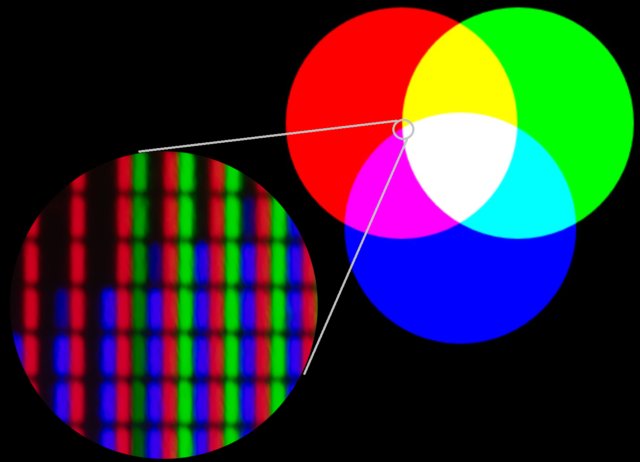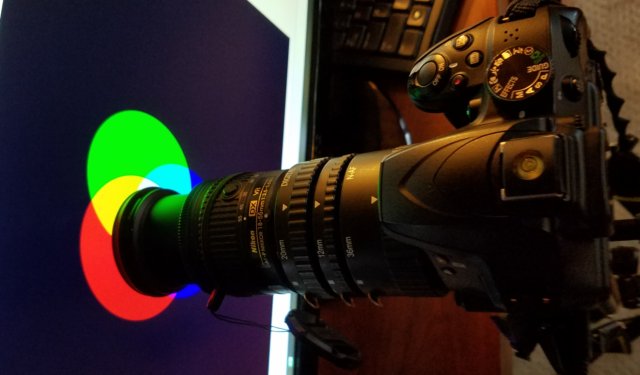There are two main types of color mixing: additive color mixing and subtractive color mixing. Additive color mixing is creating a new color by a process that adds one set of wavelengths to another set of wavelengths. Additive color mixing is what happens when lights of different wavelengths are mixed. When we add all of the different wavelengths of sunlight, we see white light rather than many individual colors. It is called additive because all of the wavelengths still reach our eyes. It is the combination of different wavelengths that creates the diversity of colors.
Most monitors, phones, and telelvisions use additive color mixing to create their range of colors. The illustration below shows how a monitor uses red, gree, and blue colors dots on the screen to create different colors. The photograph on the left shows the screen as it actually appeared with a small section at the intersection of the red, blue and green circles as indicated. Blowing up the image by taking a photograph really close to the screen, as shown in the photograph on the right, shows the individual color dots on the screen. In the upper right part of the screen, the red circle is made from where only red dots are on; the yellow portion of the image has both red and green dots turned on; the magenta region has red and blue dots turned on; finally, the white area has all three dots turned on.

|

|
Use this activity to explore color mixing and its various properties.
To see the illustration in full screen, which is recommended, press the Full Screen button, which appears at the top of the page.
Below is a list of the ways that you can alter the illustration. The settings include the following:
Screen Area: click on one of the primaries to move it around. Mixing only
occurs where primary circles overlap.
Primaries: control the intensity of each of the primaries: red, green
and blue for additive, and cyan, magenta and yellow for Subtractive.
Reset Positions: returns the primary circles to their original
position.
Pressing this button restores the settings to their default values.